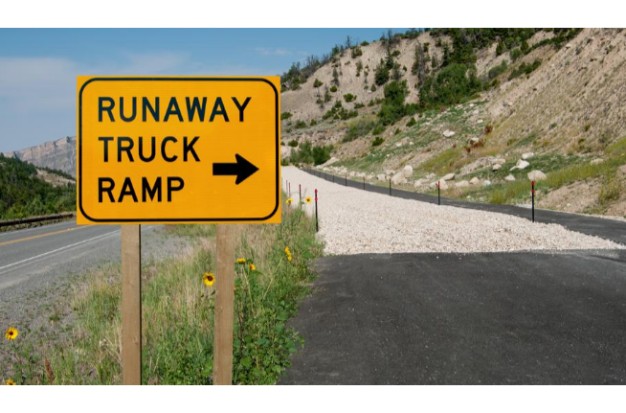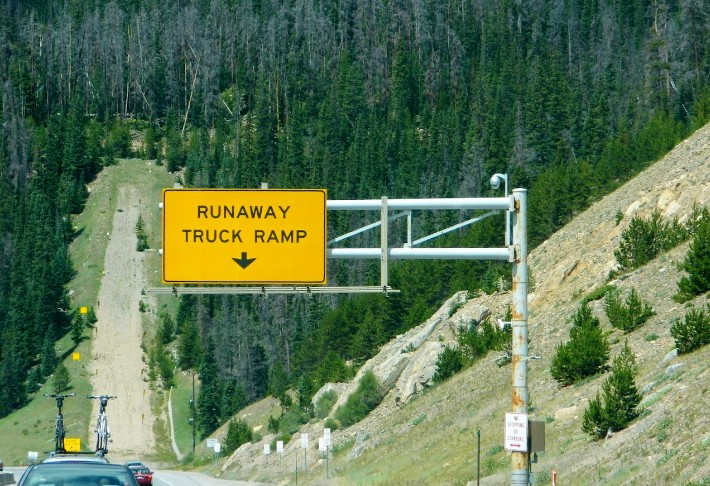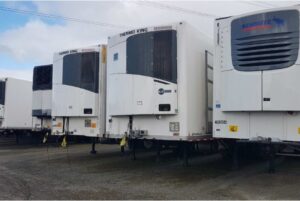
What Is a Runaway Truck Ramp – How to Use
The seemingly endless off-ramps that lead nowhere are probably something you’ve noticed if you’ve ever driven down a steep hill. Only the truck escape ramps you’re looking at for heavy-duty trucks have the potential to avert a disastrous accident.
Exactly Why Could Trucks Lose Control?
Trucks that are loaded to capacity have more momentum because they are heavier. A vehicle tends to accelerate much more quickly when traveling downhill. Trained truck drivers use a low gear to produce more resistance and counteract this increase in speed.
The issue arises as the car starts to descend if it is moving too quickly. When that happens, it will continue to gain speed until it reaches dangerously high speeds. The truck must quickly slow down once at the top before beginning the descent because hills require more power from the truck.
Truck drivers may try to use the brakes if they believe their vehicle is moving too quickly. The car’s brakes, however, will stop working once it reaches a certain speed. Even if the truck driver panics and hits the brakes, their trailer will continue to go ahead, which might cause their vehicle to “jackknife” and perhaps flip over as a result of this.
What Is A “runaway Truck”?
A fully-loaded truck is heavy – up to 80,000 pounds on The mass of a truck contributes to its incredible momentum on American highways, making it challenging to stop. In addition, a large truck’s weight causes it to accelerate faster than a typical passenger car when going downhill.
The fact that truck drivers must maintain momentum on an incline complicates matters. Diesel fuel is expensive, and losing momentum while climbing an incline can use up a lot of it. When the truck reaches the crest of the hill, it needs to slow down. The driver may encounter difficulties on the downhill slope if they don’t slow down.
A truck’s speed increases as it crosses a hill’s crest. The driver should have slowed down and changed gears by this point. However, if they haven’t, their only option is to apply the drum brakes. When the downhill slope starts to get steeper, seasoned drivers will apply the brakes to slow down even more.
Regrettably, a truck’s brakes might not be effective enough to slow down on a downhill slope with a heavy load. Even if they do, there is a chance that the trailer will continue to move forward, jackknife, and endanger other motorists.
The truck, however, becomes a danger to other drivers if the driver is unable to slow down. It turns into a multi-ton battering ram that can cause unbelievable damage.
Runaway Track Ramp: What Is It?
Semi-truck drivers must negotiate various types of terrain to get from one location to another. Professional drivers face hazardous situations, such as subzero temperatures and icy roads, on a regular basis wherever they work.
Truck escape ramps are places set aside for emergencies where heavy-duty trucks can be quickly slowed down if their brakes fail using sand, gravel, or wire netting. Most of the time, these ramps seem to be an exit ramp from the highway that terminates in a dead end.
Some models harness the power of gravity to quickly accelerate the vehicle up a steep slope in order to counteract the downward force. The majority of the time, truck escape ramps are situated in areas where the truck’s brakes are frequently applied.
Uses For The Runaway Track Ramp
Ramps offer a workable solution to the runaway vehicle issue. A ramp on some U.S. highways is intended to slow down trucks, especially on those with steep inclines.
An enormous, steeply inclining pile of sand or gravel is the most typical style of runaway truck ramp. These ramps are steep enough to prevent the truck from unintentionally moving forward and climbing the ramp, and they also generate a lot of friction.
Despite the rarity of runaway trucks, drivers should always be extra cautious when traveling downhill.

How To Use A Runaway Truck Ramp
Let’s imagine you are operating a semi when you start to lose control of your speed. You have a significant downhill stretch ahead of you while the brakes are malfunctioning. How do you handle the circumstance?
1. Stay calm. It may be simple to say when operating a vehicle other than an erratic semi, but it’s important to keep your cool under pressure. Many motorists attempt to jerk the wheel and pull off to the side right away. The trailer may jackknife or even flip over if you do this. Instead, take a deep breath and turn to face the future. Look for a safe place to pull off the road, such as a runaway truck ramp. Focus on slowing the truck down and doing your best to stay in your lane if there is nothing in your line of sight.
2. Use the jake brake. Even when your drum brakes are not functioning, the jake brake will use your engine to slow the truck. Although it’s an improvement, you might still be accelerating. However, it gives you more time and can prevent you from driving the truck at a speed that makes it actually uncontrollable. You’ll have more time to locate an off-ramp at the very least.
3. Call dispatch. This may not be useful for you, depending on your circumstances. But if at all possible, inform your dispatcher of the situation and your location. This will enable your dispatcher to inform first responders of the runaway truck.
4. Turn onto the runaway truck ramp. Once you’ve located a runaway truck ramp, gently turn your truck into it while remaining as close to the center as you can. Put your hands on your hips and try to keep the truck in the middle. In the event that you hit sand or gravel, the steering wheel might be challenging to control.
5. Assess the situation. Take a moment to reflect after the truck has stopped. Check yourself for injuries despite the fact that you’re probably shaken at this point. In a state of shock, you might not initially recognize that you are hurt. Consider your own load as well. Exist any potentially dangerous flammable or hazardous materials nearby? These will guide your course of action.
6. Call emergency services. Call 911 and let them know what happened unless you’re in immediate danger (for instance, your load is on fire). Get away from the truck if you are in danger, then dial 911 once you are at a safe distance.
7. Turn off your engine. Put your car in park, turn off the engine, and make your way back to the side of the road if it’s safe to do so. Ensure that you gather all necessary documents and your personal belongings. Stay put and await the arrival of an ambulance if you are hurt.
What Exactly Are Truck Exit Ramps?
Drivers of semi-trucks travel over a variety of landscapes. Professional drivers are frequently put in perilous situations, whether it be the bitter cold and icy roads of Alaska or the treacherous incline of Colorado.
In case of brake failure, heavy-duty vehicles can be quickly slowed down at designated emergency locations called truck escape ramps using sand, gravel, and/or wire nets. The majority of these ramps resemble exit ramps from a highway leading to a dead end. Some variations use gravity to quickly accelerate the vehicle up a incline in order to counteract the downward force. Truck escape ramps are typically situated in regions of rapid descent where the brakes will be applied continuously.
This is another reason why having a fleet membership for roadside assistance is crucial. You will be shielded from the labor costs incurred during replacement or repair when you neglect to maintain your car properly and it does break down.
Summary
Runaway truck ramps are a crucial component of highways with steep inclines and declines. The road would be much less safe without them. Remain calm, maintain a straight wheel, and brace yourself if you ever need to use a runaway truck ramp. You should have no issues at all on a well-made ramp.



Average Rating